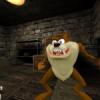@[member='sunandshadow'],
What I did was that I animated translating the character, after I erased that translation. I agree that the animation is left untouched but it has lost its movement that perfectly fitted it. And you're only thinking of a movement as simple as walking but what if he's doing arcs while attacking?
@[member='Scouting Ninja'],
The video with Rayman was very interesting, it's definitely helped me understand stuff but more regarding the environment and lighting with layers stuff, The spine2D animation style they're using doesn't fit me because I cannot draw but the idea is definitely interesting. In their specific workflow, they would have to program the movement indeed.
That being said I think I found an answer by rewatching the Ori presentation, I didn't understand that they were using "root motion" from the rig they created in 3D to make the character move, basically they use both the 3D rig + the frames. With that information from the rig they also know when the feet touch the ground and they use that to know when to spawn sounds for the footsteps etc...
If any of you guys have videos that explain the process of creating games that are a mix between 2d and 3d, it's really interesting to me, so please post them ;-)
What I personaly like about the frames animation is that I could do some really nice particles effects like flames and so on, without having to worry about the number of particles or that I don't have to worry about the number of poly's on the characters.
I have 2 questions regarding the Ori workflow where they import the rig and the frames:
As the speaker says in the video, it's a lot of frames/textures meaning a lot of memory that's being used by the animations. As opposed to spine2D where it's a single texture that's rotated around with joints. I can't use that workflow because I can't draw so the only options given to me are: frames from 3d animation and standard 3d animation where the model is also imported in Unity.
1) What are your thoughts on these 2 workflows?
2) Just how much of an optimization will I have to do down the line, the speaker said he had 700 2k textures for animations for all the characters. Since I'm not a genius in optimization/programmation (1 year c++ university background), what do you guys think about this number in terms of sharing the memory with other stuff like environment art, sounds, ai etc...
I know the answer to that last question is probably "it depends on a lot of things" but please give me your thoughts in some more details as I'm sure you guys are more knowledgeable than I am :o
What I personnaly like about the frames animation is that I could do some really nice particles effects like flames and so on, without having to worry about the number of particles or that I don't have to worry about the number of poly's on the characters.







